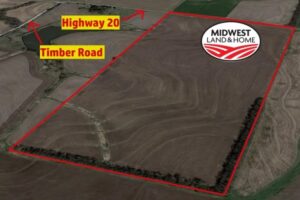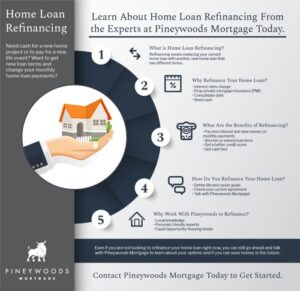
When embarking on a construction project, choosing the right method can make all the difference. Design-build vs traditional construction presents two distinct approaches, each with its unique advantages and challenges. Understanding these differences is essential for homeowners, builders, and real estate professionals alike.
Design-build streamlines the process by integrating design and construction under one contract, fostering collaboration and potentially reducing costs and timelines. In contrast, traditional construction separates these phases, which can lead to miscommunication and delays. This overview dives into how each method impacts not only the building process but also the overall project outcomes.
Design-Build vs Traditional Construction
The construction industry has long been dominated by two primary methodologies: design-build and traditional construction. These approaches offer distinct advantages and challenges that can significantly impact the outcome of a project. Understanding these differences is essential for stakeholders involved in construction, whether they are owners, contractors, or designers. This analysis will delve into the benefits of each method, the roles of stakeholders, and how timelines and budgets are affected.
Comparison of Benefits
Both design-build and traditional construction methods come with their unique sets of benefits.
- Design-Build: This approach promotes collaboration between designers and builders from the project’s outset, resulting in improved communication and fewer misunderstandings. A unified team can lead to innovative solutions that may not emerge in a fragmented process.
- Traditional Construction: This method typically allows for greater detail in the design phase since the designer and builder operate separately. This separation can be beneficial for projects that require complex design specifications or when the owner has specific aesthetic preferences that need thorough consideration.
Utilizing the design-build method can expedite project delivery through a streamlined process, as time-consuming back-and-forth communication is minimized. Conversely, while traditional construction may take longer due to its sequential nature, it can often provide a more detailed and refined end product.
Roles of Stakeholders
The roles of stakeholders vary significantly between design-build and traditional construction approaches, affecting project dynamics and outcomes.
- Design-Build: In this model, the owner engages a single entity that takes responsibility for both design and construction. This leads to a more cohesive team where architects, engineers, and contractors collaborate closely, resulting in a more efficient workflow.
- Traditional Construction: Here, the owner typically contracts separately with a designer and a general contractor. This can create a more adversarial relationship where miscommunication may occur between the parties, as each has their priorities and timelines.
These differences can lead to contrasting experiences for stakeholders. The design-build method fosters a collaborative environment, while traditional construction may involve more negotiation and coordination challenges.
Impact on Timelines and Budgets
Timelines and budgets are critical factors in any construction project, and the chosen method can greatly influence these elements.
- Design-Build: Projects under this method often benefit from faster completion times due to overlapping design and construction phases. This can lead to cost savings and less exposure to market fluctuations.
- Traditional Construction: The sequential nature of this approach often results in longer timelines, as design must be finalized before construction can commence. Additionally, budget overruns are more common, as changes during the construction phase can lead to increased costs and delays.
According to a study by the Design-Build Institute of America, design-build projects are typically completed 33% faster than traditional projects, illustrating the significant impact on timelines. Furthermore, this method has been shown to achieve a cost savings of up to 15% compared to traditional approaches, demonstrating its potential advantages for budget-conscious owners.
Real Estate Agents and Realtors
Real estate agents and realtors are commonly used terms in the property market, but they represent different levels of professionalism and accountability. Understanding these distinctions is crucial for both buyers and sellers when navigating the real estate landscape. Realtors adhere to a higher standard due to their membership in the National Association of Realtors (NAR), which enforces a strict code of ethics.
In contrast, while all realtors are agents, not all agents are realtors, as the latter have additional training and commitment to ethical practices.Real estate professionals often assess property value through various lenses, including construction methods. The choice between design-build and traditional construction can significantly influence how a property is perceived in the market. Properties built using modern, efficient methods tend to attract higher valuations due to their sustainability and lower long-term maintenance costs, as perceived by real estate agents and appraisers.
Differences in Representation
The distinction between real estate agents and realtors is pivotal when it comes to representation in transactions. Realtors are bound by the NAR’s code of ethics, which requires them to operate with a higher level of transparency and service. This commitment includes thorough education and ongoing training on market trends and legal changes.
Realtors have access to exclusive resources
Membership in the NAR provides realtors with tools, marketing resources, and networking opportunities that non-realtor agents may not have, enhancing their ability to serve clients effectively.
Legal and ethical obligations
Realtors must comply with the NAR’s guidelines, which cover fair housing practices and client confidentiality, ensuring a standard of care that can benefit clients.
Impact of Construction Methods on Property Value
The construction methods used in developing a property can have a profound effect on its market value. Real estate agents often recognize these factors when assessing a property’s worth. The design-build approach, known for its efficiency and innovation, frequently leads to properties that appeal to modern buyers.
Energy efficiency
Properties constructed with sustainable materials and methods generally command higher prices due to the growing market preference for eco-friendly features.
Quality of finishes
Design-build projects often allow for custom finishes and designs, which can significantly enhance the aesthetic appeal and functionality of a property.
Market trends
Real estate agents note that properties built with newer methods tend to sell faster, a factor that can directly influence pricing strategies.
Real Estate Agents Navigating Construction Options
Real estate agents play a vital role in guiding clients through various construction options, ensuring informed decisions are made. They can leverage their expertise to match clients with suitable builders or construction methods.
Assessing client needs
Agents can help clients articulate their desires and requirements for a new build, aligning these with available construction options.
Recommendations and referrals
Agents often maintain relationships with trusted builders and contractors, providing clients with reliable recommendations based on previous successes.
Market insights
By staying informed about the latest construction trends and local market dynamics, real estate agents can advise clients on the potential return on investment for different construction methods.Understanding these aspects allows buyers and sellers to make informed decisions in the real estate market, ultimately leading to better investments and more satisfying transactions.
Building a Home and Buying Real Estate
Building a home is an exciting journey that involves making critical decisions that can influence your future. Among these decisions, the construction method plays a significant role in determining not just the quality and durability of the home, but also the buying experience. Understanding how various construction methods affect home buying can ultimately lead to more informed choices and a smoother process.The construction method chosen can greatly impact home value, aesthetics, and overall timeline.
For potential buyers, knowing the advantages of each method is indispensable. Among the most popular approaches today are design-build and traditional construction. Each has its own set of benefits, but the design-build approach often stands out for custom home construction due to its streamlined process and integrated team structure.
Influence of Construction Methods on Home Buying Decisions
The construction method employed can significantly affect a buyer’s decision-making process. Buyers should be aware of how these methods influence the overall project, from initial designs to final walkthroughs.
Design-Build Approach
This method allows for a single point of contact from design through construction, leading to better communication and fewer delays. It often results in cost savings and a more cohesive vision for the home.
Traditional Construction
Typically involves separate contracts for design and construction, which can lead to miscommunications and potential issues down the line. However, this method allows for more control over the design process, appealing to buyers who prefer a hands-on approach.Understanding these dynamics can help buyers navigate their options effectively.
Advantages of Using a Design-Build Approach in Custom Home Construction
The design-build approach has several advantages that make it appealing for custom home construction. Here are some key benefits:
Streamlined Communication
With one entity handling both design and construction, there’s less room for miscommunication. This means fewer headaches for buyers.
Time Efficiency
The integration of design and construction phases can significantly reduce project timelines. Coordination between teams is more straightforward, often leading to quicker project completions.
Cost Control
By having a single team, design-build projects can minimize unexpected costs and changes, providing a clearer budget for buyers.
Collaborative Design
This method allows for more collaboration between homeowners and builders, enabling customization that aligns perfectly with the buyer’s vision and needs.Investing in a home built through this method can lead to greater satisfaction and a stronger sense of ownership.
Key Considerations for Buyers When Selecting Builders Based on Construction Methods
When choosing a builder, buyers should consider several factors related to construction methods. These considerations can help ensure that their investment meets expectations and aligns with their lifestyle.
Experience and Credentials
Research the builder’s background, including years in business, client reviews, and completed projects. A reputable builder will have a portfolio that reflects their expertise in the chosen construction method.
Financial Stability
Ensure that the builder has a solid financial foundation. This stability can affect the project’s completion and quality.
Transparency in Pricing
Understand how the builder calculates costs. A clear breakdown helps buyers anticipate expenses and avoid surprises.
Warranty and Aftercare
Check for warranties offered by the builder. A good warranty reflects confidence in their work and provides buyers with peace of mind.
Design Flexibility
Assess how much input the builder allows in terms of design. Some builders are more flexible than others, which can influence how well the home meets the buyer’s vision.By carefully evaluating these considerations, buyers can select a builder that best suits their needs and preferences.
Commercial Construction and Property
Design-build methods have revolutionized the landscape of commercial construction, offering a streamlined approach that enhances efficiency, reduces costs, and simplifies project management. This integrated delivery system fosters collaboration among all parties involved, thereby accelerating project timelines and ensuring a more cohesive vision from conception to completion. As the commercial real estate market continues to evolve, understanding the implications of various construction methods is essential for investors, developers, and stakeholders.The design-build approach significantly impacts the valuation of commercial properties.
By facilitating better communication and coordination among architects, contractors, and clients, this method often leads to projects that are completed on time and within budget. These efficiencies can enhance a property’s marketability and value, as timely delivery and superior quality are key factors considered by potential buyers and investors. Furthermore, properties built using the design-build method may also incorporate innovative features and sustainable practices, making them more appealing in today’s competitive market.
Implications of Construction Methods on Property Valuation
The choice of construction methods can drastically affect how commercial properties are valued in the marketplace. Factors that influence valuation include:
- Construction Speed: Properties that are completed faster often have lower carrying costs, reducing the overall investment risk.
- Quality of Construction: Higher quality standards typically enhance property longevity and reduce maintenance costs, leading to increased buyer confidence.
- Innovation and Sustainability: Incorporating green building practices can lead to higher valuations due to growing demand for environmentally friendly spaces.
- Market Adaptability: Design-build projects are often more flexible, allowing for adjustments that better meet market demands, which can positively influence property values.
Trends Favoring Design-Build in Commercial Development
The commercial development landscape is increasingly favoring the design-build approach due to various market trends that promote efficiency and innovation. These trends include:
- Increased Demand for Speed: As businesses seek to minimize downtime and enter markets quickly, design-build’s expedited process becomes highly attractive.
- Focus on Sustainability: The construction industry is experiencing a shift toward sustainable practices, with design-build allowing for easier implementation of green technologies.
- Technological Integration: The rise of Building Information Modeling (BIM) and other design technologies has enhanced the design-build process, allowing for better visualization and planning.
- Collaborative Work Environment: Design-build fosters strong partnerships among stakeholders, facilitating better communication and leading to improved project outcomes.
“The design-build approach not only streamlines the construction process but also enhances property valuation through improved quality and innovative designs.”
Real Estate Condominiums and Foreclosures

The landscape of real estate is diverse, especially when it comes to condominiums and foreclosures. Understanding the relationship between construction methods and the development of condominiums is essential for buyers and investors alike. This segment delves into how these construction practices influence condo projects and the strategies for evaluating foreclosures from a construction standpoint, while also comparing the design-build approach in new condominiums versus traditional construction in existing foreclosures.
Impact of Construction Methods on Condominium Development
Construction methods have a significant impact on the development of condominiums, influencing everything from design to cost and timelines. The choice between modular construction, traditional stick-built methods, or even innovative techniques like 3D printing can affect the overall quality and marketability of the condominiums.
Modular Construction
This method offers faster build times and less waste, as components are pre-fabricated off-site and assembled on location. It can lead to lower costs and quicker returns on investment, making condominiums more affordable for buyers.
Design-Build Approach
This integrated method fosters collaboration between architects and builders from the project’s inception, ensuring that the design is both practical and aesthetically pleasing. This synergy can lead to innovative features that appeal to modern buyers.
Sustainability Practices
Incorporating green building techniques, like energy-efficient systems and sustainable materials, not only impacts construction costs but can also enhance the appeal of condominiums in a market increasingly focused on eco-friendliness.
Strategies for Assessing Foreclosures from a Construction Perspective
When evaluating foreclosures, understanding the construction condition is crucial for making informed decisions. Buyers should be equipped with strategies to assess any potential issues related to construction quality and integrity.
Inspection of Structural Components
It’s essential to inspect the foundation, roofing, and framing. Look for signs of settling or damage that can indicate serious underlying problems.
Review of Renovation History
Understanding past renovations can reveal whether the updates were completed to code. Poor renovations can lead to future liability or additional costs.
Assessment of Utilities
Evaluating the state of plumbing, electrical, and HVAC systems is vital, as these can be costly to repair or replace. Buyers should consider the age and condition of these systems during their assessments.
The condition of a foreclosure can significantly impact renovation costs and potential resale value.
Comparison of Design-Build in New Condos vs. Traditional Construction in Existing Foreclosures
The approach to construction can vary dramatically between new condominiums built using the design-build method and existing foreclosures that often rely on traditional construction practices.
Design-Build Advantages in New Condos
The design-build model allows for a seamless flow from design to construction, enabling faster completion and often resulting in modern, trend-forward designs that can better meet market demands.
Challenges of Traditional Construction in Foreclosures
Traditional methods may involve multiple contractors, which can lead to miscommunication and delays. Additionally, existing structures may require significant upgrades to meet current standards, which can be cost-prohibitive.
Market Responsiveness
New condominiums developed using modern methods can adapt to current trends and buyer preferences more swiftly compared to older foreclosures that may not resonate with today’s market.In summary, the construction method chosen for condominiums plays a pivotal role in their development, while assessing foreclosures from a construction perspective can lead to better investment decisions.
Green Real Estate and Home Staging
Sustainable design-build practices are increasingly vital within the realm of green real estate. These practices not only promote environmental responsibility but also enhance the overall functionality and appeal of homes. With the growing awareness of climate change and the need for energy efficiency, the real estate market has seen a shift toward buildings that contribute positively to the environment while providing comfort and style to their inhabitants.The role of home staging in this context cannot be understated.
Properly staging a home can accentuate sustainable design features, making them a focal point for potential buyers. This is particularly important as consumers are becoming more environmentally conscious and are actively seeking homes that reflect their values. Staging can help highlight energy-efficient appliances, natural lighting, and sustainable landscaping, making the property not just visually appealing but also showcasing its eco-friendly credentials.
Sustainable Design and Eco-Friendly Materials
Sustainable design-build practices utilize materials and techniques that minimize environmental impact while maximizing efficiency. For instance, using reclaimed wood not only reduces deforestation but also adds character to a home. Other eco-friendly materials that are often incorporated include bamboo flooring, which is renewable and durable, and recycled metal for roofing, which can withstand the elements while reducing waste.The following items exemplify the benefits of eco-friendly materials in construction:
- Low-VOC Paints: These paints reduce harmful emissions, making indoor air quality safer for inhabitants and visitors.
- Solar Panels: Integrating solar technology can significantly lower energy costs and reduce reliance on fossil fuels, making homes more self-sufficient.
- Green Insulation: Materials such as cellulose or sheep’s wool not only provide excellent insulation but also have lower environmental footprints compared to traditional insulation options.
- Water-Saving Fixtures: Installing low-flow toilets and faucets can drastically reduce water consumption in homes, which is a critical factor in sustainable living.
Staging can further amplify the advantages of these sustainable materials. For example, a living room with reclaimed wood accents can be staged to emphasize its rustic charm, while also providing an educational narrative about sustainability. Similarly, well-placed solar panels can be showcased as a modern feature that adds both aesthetic value and energy efficiency.In conclusion, the intersection of green real estate and home staging creates a powerful opportunity to attract eco-conscious buyers.
By emphasizing sustainable design-build practices and utilizing eco-friendly materials, homeowners can not only contribute to environmental preservation but also elevate the marketability of their properties.
Real Estate Investing and Land

Investing in real estate land presents unique opportunities and challenges that are often influenced by the construction methodologies applied. Understanding how these methods impact investment potential is crucial for making informed decisions. By aligning construction techniques with investment goals, investors can maximize their returns and minimize risks.Construction methodologies can significantly affect the viability and profitability of land investments. For instance, the choice between traditional construction and design-build approaches can lead to variations in timelines, costs, and overall project efficiency.
Investors should consider how these methodologies will integrate with their long-term goals, whether it’s for resale, rental income, or development.
Factors to Consider When Investing in Real Estate Involving Construction Projects
When investing in real estate that includes construction, several factors need to be evaluated to ensure a sound investment. Each of these considerations plays a vital role in aligning construction methods with investment objectives.
- Location: The geographical area can influence construction costs and the type of building methods used. Areas prone to natural disasters may require specialized construction techniques.
- Market Trends: Understanding current market trends can help predict future property value increases. Areas with high demand can justify more expensive construction techniques.
- Construction Costs: An accurate assessment of construction costs will impact the overall investment budget. Investors should factor in labor, materials, and permits.
- Timeframe: The timeline for construction affects cash flow and investment returns. Faster construction methods can reduce holding costs and allow for quicker returns.
- Regulations and Zoning: Local regulations can dictate what types of construction are permissible and can impact costs and timelines significantly.
- End Use: The intended use of the property can determine the type of construction method to adopt. Residential, commercial, and mixed-use developments may each require different approaches.
- Environmental Impact: Sustainable construction practices can enhance property value and appeal to eco-conscious buyers or tenants.
- Financing Options: Understanding available financing for different types of construction can influence the choice of methods and overall investment strategy.
Investors must also keep an eye on evolving construction technologies, such as modular building and eco-friendly materials, which may enhance property value and marketability. The right construction methodology can thus be a cornerstone of a successful land investment strategy, ensuring alignment with both current market demands and long-term investment goals.
Last Word
In conclusion, the choice between design-build and traditional construction is not merely a matter of preference—it can significantly influence project efficiency, budget adherence, and stakeholder satisfaction. As we’ve explored, understanding the nuances of each approach can empower you to make informed decisions, ensuring a smoother path to your construction goals.
Query Resolution
What is the key difference between design-build and traditional construction?
The main difference lies in the integration of design and construction; design-build combines both phases under one contract, while traditional construction separates them.
How can the choice of construction method impact timelines?
Design-build often results in shorter timelines due to improved communication and coordination between design and construction teams compared to the segmented approach of traditional construction.
Does design-build affect project costs?
Yes, design-build can lead to cost savings through enhanced collaboration, reduced change orders, and streamlined decision-making processes.
Which method is better for custom home building?
Design-build is generally preferred for custom home building because it allows for greater flexibility and alignment between the client’s vision and the final product.
Can traditional construction methods still be advantageous?
Yes, traditional construction can be advantageous in specific scenarios, particularly when established processes and clear separation of roles are preferred by the client or stakeholders.





